new posts in all blogs
Viewing: Blog Posts Tagged with: book I bought, Most Recent at Top [Help]
Results 1 - 25 of 199
How to use this Page
You are viewing the most recent posts tagged with the words: book I bought in the JacketFlap blog reader. What is a tag? Think of a tag as a keyword or category label. Tags can both help you find posts on JacketFlap.com as well as provide an easy way for you to "remember" and classify posts for later recall. Try adding a tag yourself by clicking "Add a tag" below a post's header. Scroll down through the list of Recent Posts in the left column and click on a post title that sounds interesting. You can view all posts from a specific blog by clicking the Blog name in the right column, or you can click a 'More Posts from this Blog' link in any individual post.
Tom Sawyer Abroad. Mark Twain. 1894. 108 pages.
First sentence: DO you reckon Tom Sawyer was satisfied after all them adventures? I mean the adventures we had down the river, and the time we set the darky Jim free and Tom got shot in the leg. No, he wasn’t. It only just p’isoned him for more. That was all the effect it had.
Premise/plot: Tom Sawyer, Huckleberry Finn, and Jim (now free) accidentally have an adventure together--in a hot air balloon--that takes them halfway across the world to Africa. The trip has its dangers certainly. But Tom is so smug and obnoxious that one of the biggest dangers is the size of his ego. The book's biggest weakness perhaps is its sudden and abrupt ending. I can almost imagine Mark Twain going, well, it was fun and interesting when it started...but I've got a new idea for a book now and I just don't care about this anymore. So let's type THE END and send it off to be published.
My thoughts: If the ending had been an actual ending, perhaps this one would have been worth my time--and your time. As it is, I can't really recommend it! Was it easier to get published back then? Was Mark Twain under contract? Did his editor not care either? Did he even have an editor? Instead of improving as it goes along, it does the opposite. Each chapter shows Twain's growing lack of interest in what happens on this balloon ride.
I don't think the fault is solely in the premise. I think it's just that when you start a book you should see it through to the end...or else not publish it.
© 2016 Becky Laney of
Becky's Book Reviews
Identifying Barbie Dolls. Janine Fennick. 1998. 80 pages. [Source: Bought]
First sentence: Collecting Barbie dolls is one of the most popular hobbies today.
Premise/plot: Janine Fennick's book is a nonfiction guide for adults (primarily) about collecting Barbie dolls and caring for your doll collection. She essentially divides Barbie dolls into three categories. (The book was published in 1998; I'd argue there needs to be a fourth category). Her categories are: "The Ponytail Era" (1959-1966), "The Mod Era" (1967-1972), and "The Collectible Era" (1973-present).
The first fifteen pages essentially act as an introduction to doll collecting itself. The remaining three chapters focus on a specific era of doll production.
The writing is both technical and practical. A fun, swinging narrative it is not. If you want to know the difference between a #1 Ponytail and a #2 Ponytail (the first two dolls) this book will tell you ALL you need to know. If you want to know what year Midge got bendable legs, this book is for you.
My thoughts: I'll be honest, though she discusses all three eras, the author's bias for the first two eras is obvious. I wouldn't mind knowing what she thinks of the current state of Barbie. (I am disappointed not with the Fashionista line, but, with the other offerings. Almost all Barbies produced in the past five to seven years have the exact same face, almost the exact same makeup, almost the exact same hair. There is no point anymore to buying *more* dolls. To have two or three dolls with the same face is one thing. Twins! Triplets! But to have sixteen? That's just CREEPY. Instead of buying more dolls, you'd almost be better off just buying fashion accessories. But clothes can be very taste specific. (I always LOVED, LOVED, LOVED sewing my own Barbie clothes. In fact it's probably the number one thing I miss about playing with Barbies.) I miss the 80s and 90s. Yes, the author doesn't really see the point of it all. But I did and do.
Probably the biggest strength of this book is the use of COLOR photographs. So many dolls, so many fashions shared in FULL color. Some of the Barbie biographies (for lack of a better word) just have black and white photographs. Yes, the narrative might be more entertaining. But it's the PICTURES OF BARBIE that makes you want to keep flipping through the pages.
I should also note that I am and always will be a believer that Barbie is meant to be played with and loved. This view puts me at slight odds with the strict collector looking for everything to be in a never been opened box.
© 2016 Becky Laney of
Becky's Book Reviews
The Nutcracker. Rita Balducci. Illustrated by Barbara Lanza. 1991. 24 pages. [Source: Bought]
First sentence: Once there was a little girl named Clara whose family was having a wonderful party on Christmas Eve.
Premise/plot: Rita Balducci adapts the story of the Nutcracker for a Little Golden Book. The illustrations are by Barbara Lanza.
My thoughts: This one avoids being text heavy. The adaptation is just right. It isn't too simple. It isn't too complicated. There are enough illustrations to balance the text. And the pacing seems really well done perhaps because there are just a handful of sentences on each page. The illustrations really seem to sweep you away into a magical dreamland.
This is a great way to introduce younger children to the ballet, perhaps before they attend their first performance of it!
Text: 5 out of 5
Illustrations: 5 out of 5
Total: 10 out of 10
© 2016 Becky Laney of
Becky's Book Reviews
The Twisted Root. Anne Perry. (William Monk #10) 1998. 368 pages. [Source: Bought]
First sentence: The young man stood in the doorway, his face pale, his fingers clenched on his hat, twisting it around and around.
Premise/plot: William Monk is hired by Lucius Stourbridge to find his missing fiancée, Miriam Gardner. She disappeared during a garden party without a word. Monk, newly married, takes the case. As he begins work on the case, he stumbles onto a murder case that might just prove relevant to his missing person case. Sergeant Robb has found the body of a coachman. Robb soon is eager to find Miriam too, her probably being the last to see him alive. Meanwhile Hester is not staying at home doing nothing. She is fighting for reform and change in the hospital community. She has noticed that someone has been stealing medicine from the hospital where she volunteers. It turns out the thief has a heart of gold and is a kindred spirit when it comes to caring and nursing veterans.
As so often is the case in Perry's novels, Monk, Hester, and Rathbone's paths and stories all cross. This one definitely has a twist ending.
My thoughts: I really am liking the series again. Silent Cry seems to have been the low point for me. I am glad that Monk and Hester have wed, and equally glad that not any time is devoted to their physical intimacy in the bedroom. I was very, very happy to get one scene between Rathbone and his dad!
© 2016 Becky Laney of
Becky's Book Reviews
Merry Christmas, Mom and Dad. (Little Critter) Mercer Mayer. 1982. 24 pages. [Source: Bought]
First sentence: I wanted to make Christmas very special, just for you, so I made a Christmas wreath. I wanted to decorate some Christmas cookies just for you, but I couldn't stop tasting them. I wanted to find a Christmas present just for you, but there were too many toys to look at.
Premise/plot: Little Critter tries really hard to make Christmas really, truly special for his Mom and Dad. But, as you'd expect, things don't always go according to plan. Is it the thought that counts?!
My thoughts: I love and adore Little Critter. I loved this one cover to cover. My favorite: "I wanted to wrap the baby's present just for you, but the tape was too sticky." It is a fact, by the way, that I was banned from using tape!
Text: 5 out of 5
Illustrations: 4 out of 5
Total: 9 out of 10
© 2016 Becky Laney of
Becky's Book Reviews

By:
Becky Laney,
on 12/9/2016
Blog:
Becky's Book Reviews
(
Login to Add to MyJacketFlap)
JacketFlap tags:
Anne books,
1921,
book I bought,
books reviewed in 2016,
books reread in 2016,
adult classics,
war,
World War I,
L.M. Montgomery,
Add a tag
Rilla of Ingleside. L.M. Montgomery. 1921. 277 pages. [Source: Bought]
First sentence: It was a warm, golden-cloudy, lovable afternoon. In the big living-room at Ingleside Susan Baker sat down with a certain grim satisfaction hovering about her like an aura; it was four o’clock and Susan, who had been working incessantly since six that morning, felt that she had fairly earned an hour of repose and gossip.
Premise/plot: Rilla of Ingleside chronicles "the great war" from the perspective of Rilla Blythe, Anne and Gilbert's youngest child. When the war begins, she's fourteen or so. But she grows up fast, in part because of the war, because of the changes the war brings, how it effects her family and community. And also in part because she takes on more responsibility. She not only does junior red cross work, I believe, but she fosters a 'war baby.' She takes on essentially a newborn baby 'orphaned' by the war. The mother has died. The father is a soldier--who knows where, who may or may not come back. She is to have 'the raising' of the baby to herself. Rilla is especially fond of Walter, her favorite brother, and Ken, the man she hopes to marry one day. The novel provides a behind the scenes glimpse of what daily life was like during the war, during that time period.
My thoughts: LOVE, LOVE, LOVE this one. It's such a solid and strong--and incredibly emotional--finish to a great series.
All cats are mysterious but Dr. Jekyll-and-Mr. Hyde—”Doc” for short — was trebly so. He was a cat of double personality — or else, as Susan vowed, he was possessed by the devil. To begin with, there had been something uncanny about the very dawn of his existence.
“The only thing I envy a cat is its purr,” remarked Dr. Blythe once, listening to Doc’s resonant melody. “It is the most contented sound in the world.”
Dog Monday was the Ingleside dog, so called because he had come into the family on a Monday when Walter had been reading Robinson Crusoe. He really belonged to Jem but was much attached to Walter also. He was lying beside Walter now with nose snuggled against his arm, thumping his tail rapturously whenever Walter gave him an absent pat. Monday was not a collie or a setter or a hound or a Newfoundland. He was just, as Jem said, “plain dog” — very plain dog, uncharitable people added. Certainly, Monday’s looks were not his strong point.
“There’s no use thinking about what you’re going to do — you are tolerably sure not to do it.”
The new day is knocking at the window. What will it bring us, I wonder.
“What does it matter if there’s going to be a war over there in Europe? I’m sure it doesn’t concern us.” Walter looked at her and had one of his odd visitations of prophecy. “Before this war is over,” he said — or something said through his lips—”every man and woman and child in Canada will feel it — you, Mary, will feel it — feel it to your heart’s core. You will weep tears of blood over it. The Piper has come — and he will pipe until every corner of the world has heard his awful and irresistible music. It will be years before the dance of death is over — years, Mary. And in those years millions of hearts will break.”
“Susan, I keep thinking today of once when he cried for me in the night. He was just a few months old. Gilbert didn’t want me to go to him — he said the child was well and warm and that it would be fostering bad habits in him. But I went — and took him up — I can feel that tight clinging of his little arms round my neck yet. Susan, if I hadn’t gone that night, twenty-one years ago, and taken my baby up when he cried for me I couldn’t face tomorrow morning.”
Nobody missed Dog Monday at first. When they did Shirley went back for him. He found Dog Monday curled up in one of the shipping-sheds near the station and tried to coax him home. Dog Monday would not move. He wagged his tail to show he had no hard feelings but no blandishments availed to budge him. “Guess Monday has made up his mind to wait there till Jem comes back,” said Shirley, trying to laugh as he rejoined the rest.
A baby by day was dreadful enough; a baby by night was unthinkable.
Even the most thoughtful and watchful of parents do not see everything that goes on under their very noses.
I wonder if those of us who have lived half our lives in the old world will ever feel wholly at home in the new.
No matter how much we value what our lessons have brought us we don’t want to go on with the bitter schooling.
“I wonder,” said Miss Oliver, “if humanity will be any happier because of aeroplanes. It seems to me that the sum of human happiness remains much the same from age to age, no matter how it may vary in distribution, and that all the ‘many inventions’ neither lessen nor increase it.”
The job isn’t finished — it isn’t really begun. The old world is destroyed and we must build up the new one. It will be the task of years.
“Is it Rilla-my-Rilla?” he asked, meaningly. Emotion shook Rilla from head to foot. Joy — happiness — sorrow — fear — every passion that had wrung her heart in those four long years seemed to surge up in her soul for a moment as the deeps of being were stirred. She had tried to speak; at first voice would not come. Then—”Yeth,” said Rilla.
© 2016 Becky Laney of
Becky's Book Reviews
The Adventures of Tom Sawyer. Mark Twain. 1876. 225 pages. [Source: Bought]
First sentence: “TOM!” No answer. “TOM!” No answer. “What’s gone with that boy, I wonder? You TOM!” No answer. The old lady pulled her spectacles down and looked over them about the room; then she put them up and looked out under them.
Premise/plot: Tom Sawyer is a mischievous young boy who almost always finds himself at the center of adventure. He's joined by other boys in the town, most notably Huckleberry Finn. Tom may be young, but he's not too young to "fall in love" with a certain Becky. Will that love last? Maybe, maybe not. After all, before Becky moved to town, he was in love with another little girl. So Tom may be a small-town Romeo in the making. One thing about Tom: he loves to fool everybody and even when fooled himself likes to make you think he is cleverer than anyone.
My thoughts: I read Huckleberry Finn earlier this year. I really do prefer Huck as narrator. But Tom can be charming when he chooses. (And if you can forget the way he treats Jim in Huckleberry Finn, he's fun to spend an afternoon or two with. But having just read the other book this year, I can't help seeing some of Tom's flaws!)
I would recommend both books. This one is definitely less weighty than Huckleberry Finn. There are at least three or four adventures in this one. And the book moves at a very steady pace!
© 2016 Becky Laney of
Becky's Book Reviews
Treasury of Christmas Stories. Edited by Ann McGovern. 1960. Scholastic. 152 pages. [Source: Bought]
Treasury of Christmas Stories was a delightful discovery for me, a true vintage find. The book was published in 1960, and it features stories and poems mainly published in the 1930's and 1940's. I liked that it was a blend of everything: fiction and nonfiction, stories and poems. I enjoyed the black and white illustrations as well. The illustrator is David Lockhart. Overall, both text and illustrations have a lovely, vintage feeling.
My top three poems would be, "Presents" by Marchette Chute, "Day Before Christmas" by Marchette Chute," and "A Visit from St. Nicholas" by Clement Clarke Moore. My top three stories would be: "A Piano by Christmas" by Paul Tulien, "Christmas Every Day" by W.D. Howells, and "A Miserable, Merry Christmas" by Lincoln Steffens.
Secret in the Barn by Anne Wood (poem)
It's nearly Christmas--it's Christmas Eve!
And it's snowing all over the place,
The roof of the barn is sugary white--
Its eaves are lined with lace.
A Christmas Gift for the General by Jeannette Covert Nolan (1937) (story)
Kennet, at the window, thought that the day was not at all like Christmas. The street he looked into was silent, almost desolate; the few people passing walked quickly with bent heads, as if they were cold, or sad--or both.
Christmas by Marchette Chute (1946) (poem)
My goodness, my goodness,
It's Christmas again.
The bells are all ringing.
I do not know when
I've been so excited.
The tree is all fixed,
The candles are lighted,
The pudding is mixed.
Christmas Every Day by W.D. Howells (story)
The little girl came into her papa's study, as she always did Saturday morning before breakfast, and asked for a story. He tried to beg off that morning, for he was very busy, but she would not let him. So he began: "Well, once there was a little pig--" She put her hand over his mouth and stopped him at the word. She said she had heard little pig stories till she was perfectly sick of them. "Well, what kind of story shall I tell, then?" "About Christmas. It's getting to be the season. It's past Thanksgiving already."
Ashes of the Christmas Tree by Yetza Gillespie (1946) (poem)
When Christmas trees at last are burned
Upon the hearth, they leap and flash
More brilliantly than other wood,
And wear a difference in the ash.
The Fir Tree by Hans Christian Anderson (story)
Once upon a time there was a pretty, green little Fir Tree. The sun shone on him; he had plenty of fresh air; and around him grew many large comrades, pines as well as firs. But the little Fir was not satisfied.
Presents by Marchette Chute (1932) (poem)
I wanted a rifle for Christmas,
I wanted a bat and a ball,
I wanted some skates and a bicycle,
But I didn't want mittens at all.
A Miserable, Merry Christmas by Lincoln Steffens (1931, 1935) (excerpt from an autobiography)
What interested me in our new neighborhood was not the school, nor the room I was to have in the house all to myself, but the stable which was built back of the house.
The Bells by Edgar Allan Poe (poem)
Hear the sledges with the bells--
Silver bells!
What a world of merriment their melody foretells!
Yuletide Customs in Many Lands by Lou Crandall (1941) (nonfiction)
Christmas in May? It sounds strange, doesn't it? And yet in the early centuries of Christianity, the birthday of Jesus probably was sometimes celebrated in May, sometimes in other months; certainly it was often observed in January. This was because the exact date of the birth of Christ has never been known.
Lord Octopus Went to the Christmas Fair by Stella Mead (1934) (poem)
Lord Octopus went to the Christmas Fair;
An hour and a half he was traveling there.
Then he had to climb
For a weary time
To the slimy block
Of a sandstone rock,
And creep, creep away
To the big wide bay
Where a stout old whale
Held his Christmas Sale.
Christmas Tree by Aileen Fisher (1946) (poem)
I'll find me a spruce
in the cold white wood
with wide green boughs
and a snowy hood.
Silent Night, Holy Night (traditional song)
Deck the Halls (traditional song)
It Came Upon A Midnight Clear (traditional song)
O Christmas Tree (traditional song)
Wassail Song (traditional song)
The Birds (traditional song)
Shepherds, Shake Off Your Drowsy Sleep (traditional song)
The Jar of Rosemary by Maud Lindsay (excerpt from a book)
There was once a little prince whose mother, the queen, was sick. All summer she lay in bed, and everything was kept quiet in the palace; but when the autumn came she grew better.
One Night by Marchette Chute (1941) (poem)
Last winter when the snow was deep
And sparkled on the lawn
And there was moonlight everywhere,
I saw a little fawn.
Mr. Edwards Meets Santa Claus by Laura Ingalls Wilder (1935) (excerpt from a book)
The days were short and cold, the wind whistled sharply, but there was no snow.
Day Before Christmas by Marchette Chute (1941) (poem)
We have been helping with the cake
And licking out the pan,
And wrapping up our packages
As neatly as we can.
A Piano by Christmas by Paul Tulien (1957) (story)
There was one thing Billy's mother had been wanting, and that was a piano. Mother liked to play, and before her marriage she had played on her sister's piano every evening.
A Visit from St. Nicholas by Clement Clarke Moore (poem)
'Twas the night before Christmas, when all through the house
Not a creature was stirring, not even a mouse;
The stockings were hung by the chimney with care,
In hopes that St. Nicholas soon would be there.
How Santa Claus Found the Poorhouse by Sophie Swett (1956) (story)
Heliogabalus was shoveling snow. The snow was very deep, and the path from the front door to the road was a long one, and the shovel was almost as big as Heliogabalus. But Gobaly--as everybody called him for short--didn't give up easily.
Golden Cobwebs by Rowena Bennett (poem)
The Christmas tree stood by the parlor door,
But the parlor door was locked
And the children could not get inside
Even though they knocked.
The Gift of St. Nicholas by Anne Malcolmson (1941) (story)
Three hundred years ago in the little city of New Amsterdam lived a young cobbler named Claas.
A New Song by Ernest Rhys (1946) (poem)
We will sing a new song
That sounds like the old:
Noel.
© 2016 Becky Laney of
Becky's Book Reviews
A Child's Geography of the World. V.M. Hillyer. 1929/1951. 472 pages.
First sentence: When I was a boy, my nurse used to take me to the railroad station to see the trains.
Premise/plot: A Child's Geography of the World was first published in 1929. The edition I found was revised and published in 1951. The tone is casual conversation. There are a few black and white illustrations throughout the book. The book is full of information, but what kind?
The truth is some information stays the same no matter the decade. (For example the location of the The Great Lakes, the Empire State Building, the Leaning Tower of Pisa). But plenty of things have changed and changed dramatically! Nations have passed away, governments have been toppled, revolutions have taken place. Also the United States has more than 48 states! Mount Everest has been climbed. Man has gone to the moon and back.
The last war mentioned is World War 2. Communists are mentioned, or perhaps I should say warned against!
Race is definitely an issue if you're reading this with children. (God created black men at night and many black people in Africa eat each other. The narrator makes an offhandedly comment that you will likely never see a real live Indian because there are few left. The narrator later makes an aside that the U.S. does it's best to keep out the Chinese.) I would say adults can throw away the bad and keep the good and have the discernment needed to tell the difference between the two. I would not recommend young children read this on their own for several reasons. One being that unless this text has been updated and revised recently, you'd have more misinformation than correct information.
My thoughts: I find vintage books entertaining. I do. Rare, long out-of-print books call to me. It's a way to capture a glimpse of the past, for better or worse. Not a historical writer's idea of the past. Good Morning, Miss Dove is one of my favorite, favorite books--and movies. This book would have been published at exactly the right time for Miss Dove to use!
The information is dated, true, I won't lie, but it is also a strong narrative. If there weren't problematic sections, I could easily call it charming.
© 2016 Becky Laney of
Becky's Book Reviews
The Purple Pussycat. Margaret Hillert. 1950. 31 pages. [Source: Bought]
First sentence: We can not play now. We have work to do. Can you help me? Now we can go. Come with me. I want you to come.
Premise/plot: A boy's toy--a purple pussycat--has adventures on his own once the boy falls asleep.
The copyright of my copy of the book says 1981. The book was a part of Follett's Just Beginning To Read series. The whole book has just a fifty-eight word vocabulary. And perhaps that simplicity keeps it from being a wow of a plot.
My thoughts: Was it worth the quarter I paid for it? Probably. The series promises COLORFULLY ILLUSTRATED books, and, I won't deny that these illustrations are colorful. I'm not sure you'd see anything like them published today. (The house the boy lives in desperately needs the Property Brothers, in my opinion.) Once the (toy) cat begins his adventures outside, I think the book becomes more interesting.
Text: 3 out of 5
Illustrations: 3 out of 5
Total: 6 out of 10
© 2016 Becky Laney of
Becky's Book Reviews
Bedtime Book. Mabel Watts. Illustrated by Florence Sarah Winship. 1963. 28 pages. [Source: Bought]
First sentence: At night, when you're sleepy, Mom turns down your bed. But suppose you were some sort of animal instead...
Premise/plot: This bedtime book is animal-focused or animal-themed. We've got an elephant, turtle, mouse, lamb, lion, puppy, kitten, horse, bear cub, fawn, stork, bird, fox, seal, and squirrel. The text is written all in rhyme.
My thoughts: Really loved this one. I think I loved the turtle most of all. If you were a turtle you'd get under your shell. Then you'd huddle and cuddle and sleep very well." Almost better than the text, the illustrations.
Text: 4 out of 5
Illustrations: 5 out of 5
Total: 9 out of 10
© 2016 Becky Laney of
Becky's Book Reviews
The Very Best of Friends. Steffi Fletcher. 1963. 27 pages. [Source: Bought]
First sentence: Once upon a time a cow, a hen, a goat, and a pony lived on a farm. They lived there most happily. But then one day a new owner came to the farm.
Premise/plot: The animals on this farm runaway. Each animal finds a place to stay. They meet together every day. They meet a little boy who happens to be great at taking care of them. They decide the little boy would be a great new owner.
My thoughts: Well, I must admit I was disappointed with this one. I was judging it at first by the illustrations alone. I didn't bother to read the text before I bought it. The text was just silly and super unrealistic. (Was it as unrealistic as Bess not having legs for several pages in Ballerina Bess? I don't know.) For example, the cow milks herself and comes to town trying to sell her milk. The hen carries her own eggs to town to try to sell. And the goat somehow, someway makes cheese from her own milk and ties it on her back to take it to town and sell. Still, it isn't a complete loss for I do like the illustrations.
Text: 2 out of 5
Illustrations: 4 out of 5
Total: 6 out of 10
© 2016 Becky Laney of
Becky's Book Reviews
The House My Grandpa Built. Geraldine Everett Gohn. Illustrated by Bonnie and Bill Rutherford. 1971. Whitman. 30 pages. [Source: Bought]
First sentence: This is the lot my grandparents found, with maple trees and high, dry ground. These are the plans that Grandpa drew, showing the rooms and outside view--a small sort of house, for their children have grown and left the big house for homes of their own.
Premise/plot: Grandpa and Grandma are moving into a house that he is having built. The book follows the construction of the house from beginning to end. And it's all done in rhyme--for better or worse!
My thoughts: I liked this one. I like that we get to see the plans of this house too. I'm an addict for HGTV, I admit. And even before that This Old House was one of my favorite, favorite shows. So this cute little book has a just right feel for me.
Text: 3 out of 5
Illustrations 3 out of 5
Total: 6 out of 10
© 2016 Becky Laney of
Becky's Book Reviews
Trumpet. Patricia Lynn. Illustrated by Bernice Myers. 1953. Whitman. 30 pages. [Source: Bought]
First sentence: On Farmer Friendly's farm everyone worked. Farmer Friendly plowed and hoed and harvested the fields. Mrs. Friendly cleaned and baked and sewed. Babs and Buzzy sold fruit and vegetables at their roadside stand, while Harry the hired man did a little of everything.
Premise/plot: The friendly family gets a dog; they name him Trumpet. Everyone, but Harry, likes him. Well, that's only partly true. The animals don't like Trumpet's barking, and, the family doesn't like how the animals react when Trumpet is barking. But. When Trumpet learns that there is a right time and a wrong time to bark, all is well on the farm.
My thoughts: I liked this one. It was a cute story. I really enjoyed the illustrations. If you enjoy vintage illustrations, then you should definitely seek this one out.
Text: 3 out of 5
Illustrations: 4 out of 5
Total: 7 out of 10
© 2016 Becky Laney of
Becky's Book Reviews
Jiggers. Joy Muchmore Lacey. Illustrated by Marge Opitz. 1963. 28 pages. [Source: Bought]
First sentence: Jiggers was a little black and white dog. He came to live with Judy the day she was six years old.
Premise/plot: Jiggers and Judy are very happy together for the most part. But one day while Jiggers is watching Judy begin her walk to school, he is a bit naughty. He does not go back into the house, or even the yard. When Judy returns home that day, Jiggers is not there and has not been there all day. The search is on. Where did Jiggers go? Can Judy and her family find him again?
My thoughts: I liked this one well enough. It is a lost dog story that is sweetly predictable. (They find him and all is well in the end. Not all lost pet stories have a happy ending in real life.)
Text: 3 out of 5
Illustrations: 4 out of 5
Total: 7 out of 10
© 2016 Becky Laney of
Becky's Book Reviews
Two Stories About Kate and Kitty. Lee Priestley. Illustrated by Alice Schlesinger. 1968. Whitman. 30 pages. [Source: Bought]
First sentence: Kate was a little girl, flitty and pretty. Kitty was a little cat, pouncy and bouncy. Kate and Kitty belonged to each other.
Premise/plot: Kate and Kitty are best, best friends. In the first story, Kitty keeps finding herself on the wrong side of the door. First, in the fall, then the winter, and at last in the spring. If only there was a way for Kitty to let everyone know she needs back IN. The second story "An Alarm Clock for Kitty." Both Kate and Kitty are sound sleepers. Kate's parents get her an alarm clock to wake up their precious little sleepy head. But what can be an alarm clock for a cat?
My thoughts: I did not have this one growing up. But if I had, I would have LOVED, LOVED, LOVED it and read it again and again and again. As an adult, I still really love it. I am so glad I found this one at my local charity shop.
Anyone who loves cats, who loves children's books, who loves vintage books really need to find a copy of this one!
Text: 5 out of 5
Illustrations: 5 out of 5
Total: 10 out of 10
© 2016 Becky Laney of
Becky's Book Reviews
Anne of Ingleside. L.M. Montgomery. 1939. 274 pages. [Source: Bought]
First sentence:
“How white the moonlight is tonight!” said Anne Blythe to herself, as she went up the walk of the Wright garden to Diana Wright’s front door, where little cherry-blossom petals were coming down on the salty, breeze-stirred air. She paused for a moment to look about her on hills and woods she had loved in olden days and still loved. Dear Avonlea! Glen St. Mary was home to her now and had been home for many years but Avonlea had something that Glen St. Mary could never have. Ghosts of herself met her at every turn . . . the fields she had roamed in welcomed her . . . unfading echoes of the old sweet life were all about her . . . every spot she looked upon had some lovely memory. There were haunted gardens here and there where bloomed all the roses of yesteryear. Anne always loved to come home to Avonlea even when, as now, the reason for her visit had been a sad one. She and Gilbert had come up for the funeral of his father and Anne had stayed for a week.Premise/plot: Anne and Gilbert have been married over a decade when the book begins. Anne is a mother now, and these are her children: Jem, Walter, Nan and Di, Shirley, and Rilla. (Technically, Rilla is still in womb when the novel opens!) This one has a LOT of narrators. Readers alternate spending time with Anne, Jem, Walter, Nan, Di, and Rilla. (I honestly can't remember if there are any Shirley chapters or not! If there are Shirley chapters, I can't remember one adventure he ever had! I know he's Susan's BABY. But little else!)
My thoughts: I liked this one. I didn't love, love, love it. I'd never consider skipping it in my rereading. It's just not as dear to me as some of the others in the series!
Favorite quotes:
“Do you know that it costs six hundred dollars a year to feed an elephant?” said Gilbert solemnly. “An imaginary elephant doesn’t cost anything,” explained Jem patiently. Anne laughed. “We never need to be economical in our imaginations, thank heaven.”
“A hand-me-down cap is bound to fit somebody’s head but it doesn’t follow that it was made for him.”
© 2016 Becky Laney of
Becky's Book Reviews
The Silent Cry. Anne Perry. 1998. 368 pages. [Source: Bought]
First sentence: John Evan stood shivering as the January wind whipped down the alley.
Premise/plot: The Silent Cry is the eighth book in the William Monk mystery series by Anne Perry. (Perry has two ongoing Victorian mystery series.) While some books in the series have been disturbing and violent, this one seems even more so. Think of it as historical Law and Order SVU.
My thoughts: What can I say about the crime(s)? Honestly, I hated that aspect of this one. I will just add that it's best you don't accidentally--or purposefully--sneak a peek at the ending. In the case of this book, if you do it will ruin the entire book for you (like it did for me) and you will spend the entire book SCREAMING at the characters. That is if you keep the book in hand at all. In fact, it took me months to pick this one back up. I had been obsessively reading through one or two of Perry's books a month. Until this one. And I found myself not wanting to go on. I wanted to start the next book in the series. Part of me, was, WHAT IF SOMETHING HAPPENS IN THIS BOOK TO MOVE THE HESTER/MONK STORY LINE FORWARD? WHAT IF SOMETHING IMPORTANT HAPPENS IN ONE OF THE KEY RELATIONSHIPS OF THE SERIES. Rathbone and Hester, Hester and Monk, Monk and Rathbone. What if Monk gets a few new memories back and I miss it? So I *made* myself push forward into uncomfortable territory.
I will say this. I think it probably would have been safe to skip this one after all. WITH the exception that we do get one or two lovely scenes between Hester and Rathbone!!!
© 2016 Becky Laney of
Becky's Book Reviews
Savaged Lands. Lana Kortchik. 2016. 292 pages. [Source: Bought]
First sentence: It was a balmy September afternoon and the streets of Kiev were crowded. Just like always, cars screeched past the famous Besarabsky Market. And just like always, a stream of pedestrians engulfed the cobbled Kreshchatyk. Yet something was different. No one smiled, no one called out greetings or paused for a leisurely conversation in the shade of the many chestnut trees that lined the renowned street. On every grim face, in every mute mouth, in the way they moved – a touch faster than usual – there was anxiety, fear and unease. And only three teenagers seemed oblivious to the oddly hushed bustle around them.
Premise/plot: Natasha Smirnova's world is turned upside down by the Nazi's invasion of her hometown of Kiev in September 1941. Savaged Lands chronicles her life during the war.
My thoughts: I almost loved this one. I did. Why the almost? The love scenes were a bit too graphic for my personal taste. (I like things on the clean side). What did I love about it? The drama and intensity of it. The ugliness of war and the messiness of family life come together in this historical novel. I also thought the author did a good job creating complex characters. Not every single character perhaps. But the main characters certainly.
What did I like about it? The romance. The romance is both the novel's biggest strength and greatest weakness. It all depends on YOU the reader. If you love ROMANCE, if you love romance with DRAMA, with OBSTACLES, then you may love, love, love this one. It wouldn't be a stretch to say this one is more about a 19 year old girl falling madly, deeply in love for the first time than it is a novel about the second world war. If you love HISTORY more than romance, you might feel that too much emphasis is placed on her weak-in-the-knees, heart-pounding romance. Her life is practically unrecognizable, she's lost immediate family members, and all her thoughts are consumed in HIM. All the time it's him, him, him, HIM. (His name is Mark, I believe)
This one has plenty of tension and conflict. Is it good drama? or too melodramatic? I think again this is up to each reader. The conflict between Lisa and Natasha--two sisters--is very real and takes up a good portion of this one. Definitely gives readers something to think about as they keep turning pages.
© 2016 Becky Laney of
Becky's Book Reviews
Ernie Pyle in England. Ernie Pyle. 1941. 215 pages. [Source: Bought]
First sentence: A small voice came in the night and said, “Go.” And when I put it up to the boss he leaned back in his chair and said, “Go.” And when I sat alone with my so-called conscience and asked it what to do, it pointed and said, “Go.” So I’m on my way to London.
Premise/plot: Ernie Pyle in England was first published in 1941. It gathers together Ernie Pyle's newspaper columns from his time--three or so months--in England (and Ireland and Scotland). (He was an American journalist.) At the time the book was published, America had NOT yet entered the second world war.
My thoughts: WHY DID NO ONE TELL ME THIS BOOK EXISTED?! Seriously. I've gone all these years of my life not knowing about Ernie Pyle?!?!?! This one was a PERFECT fit for me. I love to read about England. (I do. I really do.) And I love to read about World War II. If you love history, this one may prove quite satisfying. And if you love human-interest stories, then this one will certainly satisfy!!!
I found it fascinating, entertaining, compelling, charming.
Quotes:
A ship carries people out of reality, into illusion. People who go away on ships are going away to better things.
Our bathtub has three faucets, one marked cold, and two marked hot. The point is that one is a little hotter than the other. I don’t know why it’s done this way. All I care about is that one or the other should give off hot water; and they really do — plenty hot. But our radiator does not have the same virtue. It is a centuries old custom not to have heat over here. All radiators are vaguely warm; none is ever hot. They have no effect at all on the room’s temperature. I’ve been cold all over the world. I’ve suffered agonies of cold in Alaska and Peru and Georgia and Maine. But I’ve never been colder than right here in this room. Actually, the temperature isn’t down to freezing. And it’s beautiful outside. Yet the chill eats into you and through you. You put on sweaters until you haven’t any more — and you get no warmer. The result is that Lait and I take turns in the bathtub, I’ll bet we’re the two most thoroughly washed caballeros in Portugal. We take at least four hot baths a day. And during the afternoon, when I’m trying to write, I have to let the hot water run over my hands about every fifteen minutes to limber them up. I’m telling the truth.
My new English friends wanted to know what America thought; and they told queer bomb stories by the dozen. “You’re a welcome sight,” they said. “We’ve all told our bomb stories to each other so many times that nobody listens any more. Now we’ve got a new audience.”
London is no more knocked out than the man who smashes a finger is dead. Daytime life in London today comes very close to being normal.
Some day when peace has returned to this odd world I want to come to London again and stand on a certain balcony on a moonlit night and look down upon the peaceful silver curve of the Thames with its dark bridges. And standing there, I want to tell somebody who has never seen it how London looked on a certain night in the holiday season of the year 1940. For on that night this old, old city was — even though I must bite my tongue in shame for saying it — the most beautiful sight I have ever seen. It was a night when London was ringed and stabbed with fire. They came just after dark, and somehow you could sense from the quick, bitter firing of the guns that there was to be no monkey business this night.
And Big Ben? Well, he’s still striking the hours. He hasn’t been touched, despite half a dozen German claims that he has been knocked down. Bombs have fallen around Trafalgar Square, yet Nelson still stands atop his great monument, and the immortal British lions, all four of them, still crouch at the base of the statue, untouched.
Londoners pray daily that a German bomb will do something about the Albert Memorial in Kensington Gardens. If you have ever seen it, you know why.
Apparently the national drink in England is a beef extract called Bovril, which is advertised everywhere, like Coca Cola at home. Yesterday I went into a snack bar for some lunch. I asked the waitress just what this Bovril stuff was, and in a cockney accent that would lay you in the aisle she said: “Why sir, it’s beef juice and it’s wonderful for you on cold days like this. It’s expensive, but it’s body-buildin’, sir, it’s very body-buildin’.” So I had a cup. It cost five cents, and you just ought to see my body being built.
If I were making this trip over again I would throw away my shirts and bring three pounds of sugar.
You can hardly conceive of the determination of the people of England to win this war. They are ready for anything. They are ready to take further rationing cuts. They are ready to eat in groups at communal kitchens. Even the rich would quit their swanky dining rooms without much grumbling. If England loses this war it won’t be because people aren’t willing — and even ahead of the government in their eagerness — to assume a life of all-out sacrifice.
Don’t tell me the British don’t have a sense of humor. I never get tired of walking around reading the signs put up by stores that have had their windows blown out. My favorite one is at a bookstore, the front of which has been blasted clear out. The store is still doing business, and its sign says, “More Open than Usual.”
One of the few things I have found that are cheaper here than at home is a haircut. I paid only thirty cents the other day in the hotel barbershop, and since then I’ve seen haircuts advertised at fifteen cents. I’m going to get a haircut every day from now on — enough to last me for a year or two.
It was amazing and touching the way the Christmas spirit was kept up during the holidays. People banded together and got up Christmas trees, and chipped in to buy gifts all around. I visited more than thirty shelters during the holidays, and there was not a one that was not elaborately decorated.
I probably wouldn’t have slept a wink if it hadn’t been for the bathroom. I discovered it after midnight, when everybody else had gone to bed. The bathroom was about twenty feet square, and it had twin bathtubs! Yes, two big old-fashioned bathtubs sitting side by side with nothing between, just like twin beds. Twin bathtubs had never occurred to me before. But having actually seen them, my astonishment grew into approval. I said to myself, “Why not?” Think what you could do with twin bathtubs. You could give a party. You could invite the Lord Mayor in for tea and a tub. You could have a national slogan, “Two tubs in every bathroom.” The potentialities of twin bathtubs assumed gigantic proportions in my disturbed mind, and I finally fell asleep on the idea, all my fears forgotten.
It is hard for a Scotsman to go five minutes without giving something a funny twist, and it is usually a left-handed twist. All in all, I have found the Scots much more like Americans than the Englishmen are. I feel perfectly at home with them.
Pearl Hyde is head of the Coventry branch of the Women’s Voluntary Services. It was Pearl Hyde who fed and clothed and cheered and really saved the people of Coventry after the blitz. For more than a week she plowed around in the ashes of Coventry, wearing policeman’s pants. She never took off her clothes. She was so black they could hardly tell her from a Negro. Her Women’s Voluntary Services headquarters was bombed out, so she and her women moved across the street. Her own home was blown up, and even today she still sleeps in the police station. Pearl Hyde is a huge woman, tall and massive. Her black hair is cut in a boyish bob. And she has personality that sparkles with power and good nature. She is much better looking than in the film. And she is laughing all the time. She was just ready to dash off somewhere when I went in to see her, but she tarried a few minutes to tell me how good the Americans had been with donations.
It is against the law to leave a car that could be driven away by the Germans. You have to immobilize your car when you leave it, even though you might be walking only fifty feet away to ask a policeman for directions. In daytime, just locking the doors and taking the key counts as immobilization, but at night you have to take out some vital part, such as the distributor.
© 2016 Becky Laney of
Becky's Book Reviews
The Long Way Westward. Joan Sandin. 1989. 64 pages. [Source: Bought]
First sentence: "Look, Carl Erik," said Jonas, "the streets of America are not paved with gold."
Premise/plot: The Long Way Westward follows a Swedish immigrant family as they travel across parts of the United States to reach their new home in Minnesota. Their travel involves a lot of TRAINS. The immigrant experience of the late nineteenth century is captured quite well in this early chapter book.
My thoughts: It is so nice to have stumbled across historical fiction for the youngest of readers. Historical fiction was probably my first true genre to LOVE, LOVE, LOVE. And I think I would have really enjoyed this one if I'd read it as a kid. As an adult, I can still appreciate it and recommend it to teachers, parents, and grandparents to share with young readers in their lives.
© 2016 Becky Laney of
Becky's Book Reviews
The Best (Worst) School Year Ever. Barbara Robinson. 1994. 117 pages. [Source: Bought]
First sentence: Unless you're somebody like Huckleberry Finn, the first day of school isn't too bad.
Premise/plot: This book is a sequel to the Best Christmas Pageant Ever. Both books are narrated by a girl named Beth who bear witness to the awfulness of the Herdman family. The book loosely takes place between the first and last days of school. The chapters are more episodic than linked to one another. All focus in on the Herdman family. Some chapters are better than others. I wouldn't say that any were wonderful.
My thoughts: I really LOVE, LOVE, LOVE The Best Christmas Pageant ever. And I think the reason why was that it had a point--a redemptive point. The Herdmans surprised everyone with their humanness, and, they weren't just the town joke when all was said and done. That isn't the case with The Worst Best School Year Ever. While there was one touching moment when Beth, the narrator, noticed Imogene at her best, that alone wasn't enough to make up for all the "let's laugh at the Herdmans." The scene I did like was when Beth noticed the initials on the blanket "returned" to baby Howard. I.H. When Howard lost his blanket--he was the bald baby whose head the Herdmans tattooed with waterproof markers--Imogene gave him her old blanket and pretended it was his that she had found. Only Beth suspected the truth. The first book seemed to end with a fuzzy removal of the "us" and "them" distinction. Not so with this one. And that is disappointing.
© 2016 Becky Laney of
Becky's Book Reviews
Wagon Wheels. Barbara Brenner. Illustrated by Don Bolognese. 1978. HarperCollins. 64 pages. [Source: Bought]
First sentence: "There it is, boys" Daddy said. "Across this river is Nicodemus, Kansas. That is where we are going to build our house. There is free land for everyone here in the West. All we have to do is go and get it."
Premise/plot: Wagon Wheels is an early chapter book based on a true story. Set in the late 1870s, the book follows the adventures of the Muldie family as they settle in Kansas. First the family settles in Nicodemus, Kansas, a black community. Then the father leaves the boys behind and searches for a better place to settle down and call home, this time near Solomon City. The boys--all on their own--travel to rejoin their father. (The father disliked the flat land and missed trees and hills.)
The book is narrated by Johnny, one of four boys being raised by a widower. The text is simple, and the action is straight-forward. Though simple, it was packed with just the right amount of detail. This book is much, much shorter than any of the Little House books, but, it is just as vivid.
My thoughts: I really liked this one. The edition I picked up is all black-and-white illustrations. I could not tell based on the cover alone that it was a black pioneer family. So I was very pleasantly surprised when I started reading the text to find some diversity. The family--and the community--are saved from starvation by the generosity of Indians--Osage, I believe. Unlike the Little House books, the Indians are portrayed positively. Yes, they are referred to as "Indians" but not savages or redskins or the like.
© 2016 Becky Laney of
Becky's Book Reviews

By:
Becky Laney,
on 9/19/2016
Blog:
Becky's Book Reviews
(
Login to Add to MyJacketFlap)
JacketFlap tags:
J Fiction,
Beverly Cleary,
J Realistic Fiction,
children's classic,
1961,
MG Fiction,
book I bought,
j historical,
books reviewed in 2016,
Add a tag
Emily's Runaway Imagination. Beverly Cleary. 1961. 288 pages. [Source: Bought]
First sentence: The things that happened to Emily Bartlett that year!
Premise/plot: Emily Bartlett is the heroine of Beverly Cleary's Emily's Runaway Imagination. Emily has many adventures or misadventures, many of which center around the formation of the first public library in her town. I would categorize the book as historical fiction. Reference is made to a world war, and, I think it may even be the first world war. One of the adventures involves Emily's grandpa getting a car. And having a car is a novelty in their town. Most people either walk, ride horses, drive a horse and wagon.
My thoughts: I really LOVE this one. If I read this one growing up, I only read it once. It's even possible this is one we didn't own. It took me so long to get to it as an adult because the local library doesn't have a copy of it. I bought this battered copy of it at my local charity shop for a quarter.
Favorite quotes:
"There are still books left to choose from," answered Mama.
And there were! Just think of it, real library books right here in Pitchfork, Oregon. The Dutch Twins, the Tale of Jemima Puddleduck--what a tiny book that was! Emily had not known they made such little books. The Curly-Haired Hen, English Fairy Tales. But no Black Beauty. Oh, well, perhaps another time. Emily chose English Fairy Tales because it was the thickest, and Mama wrote her name on a little card that she removed from a pocket in the book. Emily now had a library book to read. (117)
"Ma'am, is it all right if I get some books for my family?" he asked.
Mama smiled at the boy. "I don't believe I have seen you in Pitchfork before. Do you live in the country?"
"No, ma'am. I live in Greenvale," he answered. "We read about the library in the Pitchfork Report and I walked down the railroad track to see if we could get some books too."
"Why, that's at least four miles," said Mama, "and four miles back again."
The boy looked at the floor. "Yes ma'am."
"Of course you may take books for your family," said Mama. This boy wanted to read. That was enough for her. It made no difference where he lived. (118)
© 2016 Becky Laney of
Becky's Book Reviews
Amigo. Byrd Baylor. Illustrated by Garth Williams. 1963. 48 pages. [Source: Bought]
First sentence: His mother said, "Come Francisco, my son. Tell me why your eyes are sad, my little one."
Premise/plot: Amigo is written in verse. It is historical fiction--about a boy longing for a dog. His family can't afford an actual dog, but, his parents encourage him to tame something wild, something that can take care of itself, something like a prairie dog. So Francisco sets out to tame a prairie dog, and, he knows just what he'll call it: Amigo. That's half the story. Amigo is a prairie dog that is curious and longs for adventures. He's drawn to humans, and he longs to tame a boy. Amigo picks out just the boy to tame, and, surprise, surprise, it's Francisco. Readers in on both sides of the stories can predict where this one is heading. It's cute.
My thoughts: I'll be honest: I bought it for the art. The illustrations are by Garth Williams. I thought if the text was nice, it would be an extra bonus. But really, I was just happy to see more of Garth Williams' work. I did enjoy the text. Do I think it's the most wonderful, amazing story ever? Probably not. I would have enjoyed more prose and less verse. But it's not awful.
© 2016 Becky Laney of
Becky's Book Reviews
View Next 25 Posts



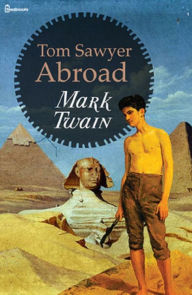
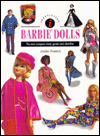
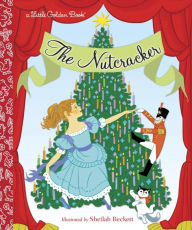
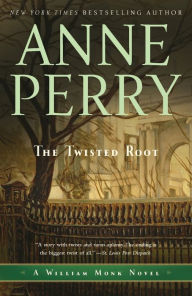


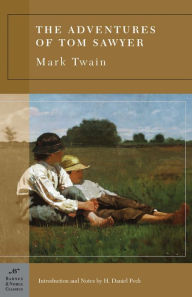
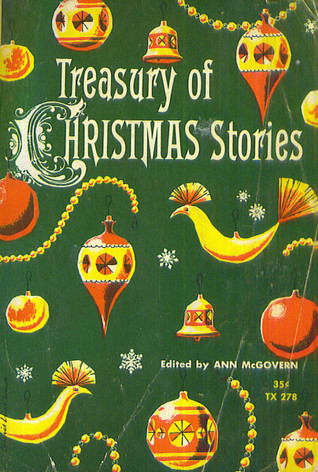








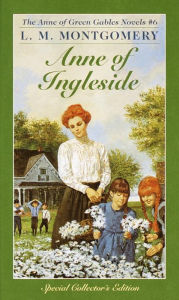



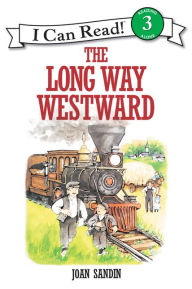
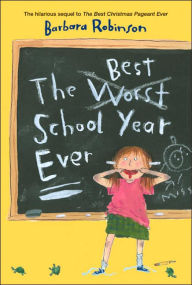
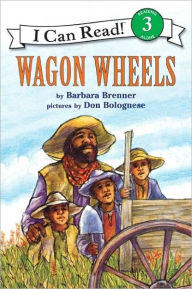
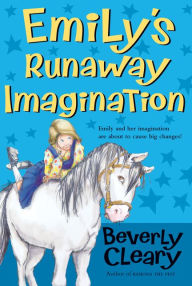

Not surprisingly, I also loved sewing Barbie clothes. My cousin was older, so she had an original doll, and I loved looking at the clothing catalogs she had for her! Haven't thought of Barbies in years-- my daughters had no interest in them whatsoever!
I miss the 80s and 90s too. My sister and I were big fans of Barbies. We loved creating personalities for them and playing out dramatic storylines. (We were not as into the fashion.) Sadly, I don't think my daughters will have Barbies. The newer ones are just not the same.
For me it was definitely both. I loved playing with the dolls. Most were fully developed characters with likes, dislikes, strong opinions, and unique style. To this day my sister and I can see something or hear something and go, "That's so Scarlett, or that's so Carrie."
The 80s and 90s were the best. I think the somewhat recent decision to make every single Barbie doll have the exact same face was a huge, huge mistake. Why would you ever need more than one--or two?! And what's the fun of playing Barbies if you just have one or two?! And store-bought clothes are so expensive it's ridiculous. (Hence why I made my own clothes for them. I had about four or five patterns from the late 70s to early 80s. And occasionally--I'd buy new patterns. I think by the end, I had about ten or twelve patterns.)